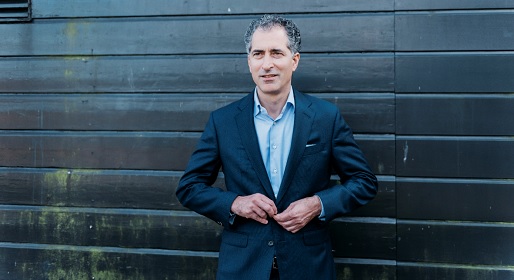About the Essence of Inclusion

Author: Adnan Basaran | Image: Gregor Servais | 31-08-2021
This insight is invaluable to business executives, against the background of increased complexity, dependency and supervision. They will have to focus not only on relatively new subjects such as reputation management and stakeholder management, but also on creating an inclusive context. Indeed, successful reputation and stakeholder management depends to a large extent on the presence of an inclusive context. The higher the degree of inclusion, the higher the return on relationships.
The need to create an inclusive context becomes most obvious when we look at the main reason why projects in companies often fail: the structural inadequacy of the relationships. In practice, we are perfectly capable of linking strategy and process, but fail time after time to get employees, shareholders and customers on board because we simply do not invest enough in a deep and transparent relationship with those stakeholders. This applies not only to large transformation projects, reorganisations or takeovers, but also to attractive strategic development directions that get bogged down after a number of years as a result of slowly growing resistance.
You cannot enter into a mature relationship with a colleague if you see him mainly as a Turk
The key question, of course, is the following: how to achieve deeper and more transparent relationships? Often a ‘how question’ implies that there is a detailed method or approach the results of which are measurable. However, this is not the case here (measuring the quality of a relationship is certainly an illusion). What I do know, however, is that the core of a structurally successful relationship starts with self-examination − or the ability to reflect and focus on one's own prejudices, thoughts and behaviour, and to see what impact this behaviour has on one’s surroundings.
Experience shows that you cannot enter into a deep, mature relationship with a colleague if you see him as a Turk in the first place. Because that means that you have a certain image of Turks and you are (un)consciously adjusting your behaviour, which leads to a 'flawed' relationship that is a potential source of conflict. The same applies, of course, to that colleague who you see in the first place as a ‘woman’ (or, conversely, as a ‘man’). Identifying oneself by origin, religion or nationality leads to conflict; there are plenty of examples of that. These deeply ingrained exclusion and/or protection mechanisms therefore have an adverse effect on the building of a relationship.
If I give a supervisory director well-intentioned advice and I then get a sneer in return for ‘not knowing what is going on’, this supervisory director apparently has a certain perception of me. My perception of him was apparently that I thought that he would appreciate advice from an outsider − which he did not. The result is a specific type of conflict in the relationship. This is a simple example of how assumptions can lead to conflict and disrupt a relationship. In short: if we communicate on the basis of perceptions, this will have an adverse effect on the relationship.
We need leaders who understand the importance of building lasting relationships, both within and outside their organization. Leaders who do not judge, but listen. Who are not afraid to show their vulnerability and in doing so, connect people. Leaders who focus on the creative capacity in their organisations by creating an inclusive context in which everyone can share his or her ideas in complete transparency and safety. This is the only way to create resilient, agile organisations that can quickly respond to the major challenges facing our world.
